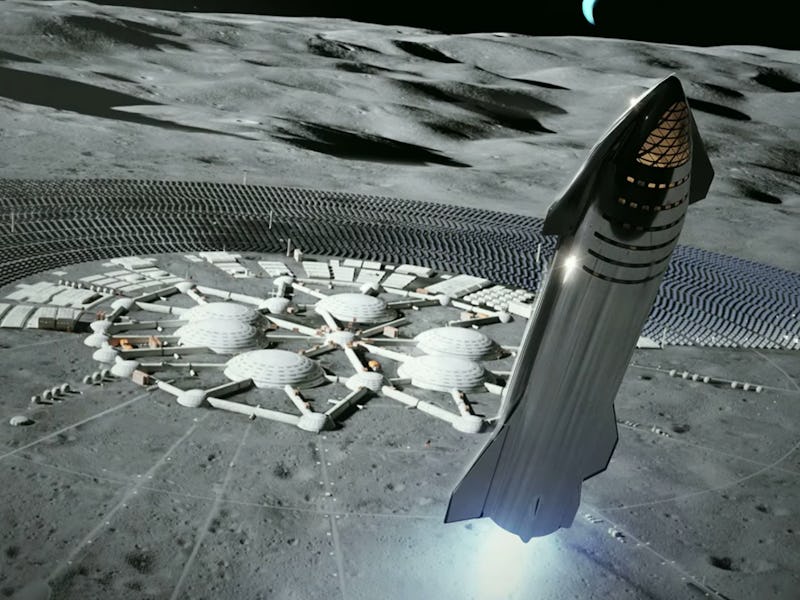SpaceX ‘excited’ about building moon bases and Mars cities at the same time
Paul Wooster touted the prospect at a convention.

SpaceX has big dreams to build cities on Mars and bases on the moon at the same time, one of the plan’s key architects revealed over the weekend.
Paul Wooster, SpaceX’s principal Mars development engineer, explained that the Starship vessel under development is designed for versatility. That means, as the company aims to complete its first city on Mars by 2050, there’s no need to switch development priorities or move the focus to complete one or the other.
“The [Starship] system also opens up capabilities, for example, to deliver very large payloads to the moon, set up and operate lunar bases,” Wooster explained on Saturday at the 22nd annual Mars Society Convention at the University of Southern California. “Because it’s the same system that’s being used for going to the moon and going to Mars, it’s not something where you have to stop going to the moon in order to go to Mars…we’re really excited about the possibilities of doing both, having bases on the moon while we’re also setting up these cities on Mars.”
The comments highlight how SpaceX is aiming big in its plans to make humans a multi-planetary species. The Starship, under development in both Texas and Florida right now, is designed for full reusability with a Raptor engine powered by liquid oxygen and methane. The goal is to establish propellant depots on Mars that harvest resources from the planet, use that to create more fuel, and potentially establish a planet-hopping network that explores the solar system. These missions are all within closer reach thanks to the ongoing work to develop the Starship.
Wooster also shared what appeared to be a new concept image of the Starship on the moon. Unfortunately, as the image was shared on a projector screen in a bright conference room, the concept art appears rather washed out:
The Starship on the moon.
SpaceX Starship: how the company plans to expand out further
When CEO Elon Musk unveiled the first Starship prototype in September, he outlined a speedy timetable to get this plan in motion. It involves a 20-kilometer test jump in a couple of months, followed by an orbital flight sometime thereafter.
From there, previous public comments suggest Starship could launch a satellite as early as 2021. A trip around the moon, featuring Japanese billionaire Yusaku Maezawa and six to eight artists, is scheduled fro around 2023. Sometime after the moon mission, SpaceX plans to send a series of manned and unmanned ships to Mars to establish a very early base.
Although the Starship has enough cargo space to eventually hold 100 people, Wooster explained over the weekend that these early missions would likely ferry a handful of people with a bias more toward cargo. That allows SpaceX to use existing technologies that have been demonstrated on the likes of the space station and Crew Dragon, increasing efficiency over time.
A Mars city.
Once the first humans have established a propellant depot and basic life support systems, the team can start building out multiple cities. These cities could then support scientific research, act as an outpost and support third-party projects when needed. Wooster explained at last year’s Mars Society Convention how this may work in practice:
“The idea would be to expand out, start off not just with an outpost, but grow into a larger base, not just like there are in Antarctica, but really a village, a town, growing into a city and then multiple cities on Mars.”
SpaceX has said relatively little about its plans for the moon, instead focusing on its long-term goals for Mars. Musk did note earlier this month that a major challenge for a lunar base may be finding the carbon to create a propellant depot like on Mars.
With NASA aiming to establish a base on the moon within five years’ time, an Ad Astra-style permanent settlement may not be too unreasonable. As the Starship was built with these multiple missions in mind, it could play a role in any further developments as they arise.